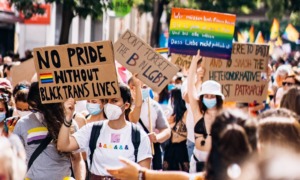 During adolescence, feeling rejected and ignored often undermines development of positive self-esteem. It is difficult for parents to know when to offer assistance and when to allow their youth space to resolve issues independently.
During adolescence, feeling rejected and ignored often undermines development of positive self-esteem. It is difficult for parents to know when to offer assistance and when to allow their youth space to resolve issues independently.
While the parent may have intended to give their young person space to resolve an issue, the youth may perceive the parent as not caring or ignoring them. Parents who do not know how to talk about sexual and/or identity development may be lost due to an inability to understand and connect. Feeling rejected and/or ignored may lead a young person to seek a more supportive environment.
In the United States, there are about a million homeless youth. This alarming number has helped us find out the issues that contribute to homelessness, the experiences and risks associated with being homeless, and some of the typical characteristics found in homeless youth subpopulations. These subpopulations — including lesbian, gay, bisexual and transgender homeless youth — need specialized care and treatment.
In this discussion, homeless LGBT youth are defined as those whose primary nighttime residence is a public or private place not meant for human dwelling such as cars, parks, abandoned buildings, bus or train stations, airports, campgrounds, shelters, transitional housing and hotels/motels. What makes these dwellings inappropriate is that they were not intended to be long-term homes.
Reasons LGBT youth become homeless are often related to issues associated with poverty, family rejection, abuse, juvenile justice involvement, discrimination, adverse experiences in group or foster homes, and aging out of the child welfare system. Here we will only discuss poverty and identity-based family rejection.
For most developing youth, much energy is exerted while struggling to define themselves and find a peer group that fits with their growing self-identity. A major piece in identity development for all youth is discovering and understanding one’s sexual identity, including acceptance of peers, family and community members. LGBT youth may struggle with gaining the acceptance of others while also struggling with self-acceptance.
Although fears of rejection can oftentimes be unfounded, for some young people these fears turn into reality. When these fears become real, LGBT youth can experience shame, isolation, abuse and even abandonment. In fact, an early study found that 50 percent of LGBT youth experienced a negative reaction when they came out, and more than 25 percent of them were forced to leave their homes for reasons directly related to their sexual orientation.
A more recent study had similar results. This study discovered that 55 percent of the included LGB and 67 percent of transgender participants were forced out of their homes because of their orientation or gender identity. The primary reason for all youth homelessness may be related to family conflict, but for LGBT youth sexual orientation and/or gender identity is a significant predicting factor for homelessness.
Poverty is one of those insidious constraints that can destroy potential. Growing up in a home where the income is only enough to afford the necessities and the family is a paycheck from being homeless shapes expectations. Young people in these homes learn to extend household resources, and stress is usually an associated element. Due to worries about providing for the family’s basic needs, parents may miss opportunities to talk with and assist their children who are questioning gender identity and/or sexual orientation, and worrying often captures a parent’s emotional energy, thereby reducing their parental effectiveness. The parent may also under- or overreact to the youth’s efforts to self-identify. Both of these responses fail to offer the assistance the youth needs. Feeling rejected may lead the young person to life outside the home.
In 2016, 34 percent of homeless youth were LGBT. It is important to recognize that according to one scholar only 2.4 percent of U.S. citizens are estimated to be LGBT. Therefore, LGBT youth are overrepresented within the overall homeless population.
An initiative to prevent LGBT youth homelessness is taking shape in Nashville, Tennessee, targeting work with homeless service providers and state agencies serving youth. Nashville’s Metropolitan Homeless Commission and Oasis Center, which provides various forms of support to youth, created a steering committee that concentrates their work on four key areas:
- Prevention, focusing on the systems working with youth and the resources needed to prevent youth homelessness,
- Coordinated entry and assessment, focusing on outcomes surrounding housing options and support services,
- Immediate response, focusing on creating youth-centric solutions for immediate needs such as shelters and drop-in centers, and
- Long-term care, focusing on creating paths to independent living, including stable housing and psychoeducational forms of care.
Utilizing the technical assistance of the True Colors Fund, all aspects of their work was approached through an open and affirming lens, ensuring the unique needs of LGBT homeless youth were considered for all recommended actions. With endorsement from Nashville’s Mayor Megan Barry, the time has come for progressive and youth informed change to take place.
Adolescence is often noted to be a difficult time for all youth and their parents. Many issues associated with sexual orientation and/or gender identity create additional challenges for youth identifying as LGBT and their families. In some instances seeking refuge on the streets is a safer option for these youth. It is within these homeless atmospheres that they often find the understanding and support they need from others who are also experiencing such adversarial treatment from those expected to provide them with care. Programs are being created to better identify these youth and provide them with the support and services they need while remaining homeless.
Justin Bucchio is an assistant professor of social work at Middle Tennessee State University, with expertise in child welfare and LGBT foster youth.
Pamela S. Sheffer is director of Just Us at Oasis Center, founding director of Launch Pad Street Free Sleep Shelter and steering committee member for the Youth Homelessness Task Force.
Wanda Davidson, Ph.D., is assistant professor in the Department of Social Work and Urban Studies at Tennessee State University.































